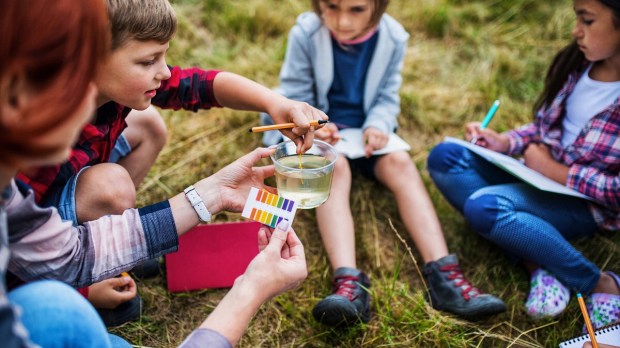Finland’s education system is the best in the world, but what makes this small Nordic nation such an educational powerhouse? What can other countries learn from Finland?
Always fascinated by education, I dug into finding out what Finland does differently from other countries. I read Teach Like Finland, The Smartest Kids in the World, and other sources unearthing all the things that Finland gets right.
Teaching my own kids at home motivated my research, but these ideas work just as well in a traditional school setting. I made a point to include ideas that are easy to incorporate into your existing classroom.
Whether you’re a teacher, a parent, a catechist, a director of religious education, or work with children in any other way, if you want to improve your educational game this school year, here are five clues to what makes a Finnish education great.
1Take frequent brain breaks
Finnish students get a 15-minute break, usually outdoors, after every 45 minutes of instruction. It turns out children are more focused and interested in learning after a break, so all these breaks actually make learning time more efficient.
2Spend lots of time outdoors
Elementary school kids in Finland spend anywhere from 1.5-4 hours outside on an average school day, and once a week they go on a longer nature trip for at least two hours. Teachers might take their students sledding or ice skating during the school day on these outings.
Teachers often move classes outdoors if the weather is decent. Kids can do their math lesson outside just as well as inside, and most likely they’ll be calmer and better regulated if they’re out in nature: Fresh air, movement, and greenery are all proven to boost learning.
3Reduce visual clutter
Classrooms tend to have mostly bare walls and minimal decorations in Finland (you can read more about this custom in Teach Like Finland). Students learn better without visual distractions; think of the quiet, calm simplicity of a Montessori classroom.
4Cultivate a peaceful learning environment
American schools tend to focus on high achievement or test scores, while in Finland, most schools have a stated mission of a peaceful or joyful environment.
There is a strong emphasis on the goal of creating a calm and peaceful classroom rather than meeting external benchmarks, and teachers have access to many resources to help achieve this goal.
Unsurprisingly, students thrive in an environment of peace and calm.
5Include natural movement
Finnish schools incorporate different ways of moving around the classroom, including learning outside, so that students are naturally active instead of sitting at a desk all day. Teachers allow kids to get up and move when they need a break and thoughtfully build physical activity into lessons.



